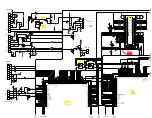
Node B Installation Guide
Version 5.0.0
Page 7 of 15
4. Overview
Node B is the European Technical Standards Institute’s (ETSI) name for the radio base
station. The basic function of the Node B is to convert 100 Base T packet data into the
UTRAN TD-CDMA air interface used between the Node B and the 3G Modem. The Node B
can be configured to operate in configurations ranging from a single sector or omni mode, up
to a 6 sector arrangement. One Node B is required for each sector of coverage, in the case
of an omni configuration one Node B will be required. The Node B is controlled by an INC
(Integrated network Controller) Generally co located at the site in a separate cabinet.
The Node B supports both 768 mega chips (10MHz) and 385 mega chips (5MHz) without
any hardware modification.
Scope
This document covers the physical installation and mountint of the NodeB using bracketry
supplied. It does not detail custom or specialised installations or applications.
Additionally, antenna rigging/mounting, lightning protection, tower work, feeder installation /
termination are all considered to be outside the scope of this document.
If in any doubt about the suitability of this document to successfully install at the proposed
location, then please consult IPWireless technical support for assistance.

































